The Beneficence Of Beets
Exploring the many medicinal/nutritional gifts offered by Beets, their place in the regenerative garden and how to preserve them and create with them in the kitchen.
Beets are packed with essential vitamins, minerals and plant compounds, some of which have medicinal properties. Beets boast an impressive nutritional profile.They are low in calories, yet high in valuable vitamins and minerals. In fact, they contain a bit of almost all the vitamins and minerals that you need.
They are excellent raw when young and are very nutritious and tasty when mature if pickled, roasted or stewed.
History of Beets: The oldest archeological proof indicates that humans cultivated beetroot in ancient times were found on the Neolithic site of Aartswoud in the Netherlands and in Saqqara pyramid at Thebes, Egypt, which dates from the time of the Third Dynasty (third millennium BC). There are also Assyrian texts that say that beetroots were growing in the Hanging Gardens of Babylon in 800 BC. The root part of the beet was cultivated (and bred to be the emphasized characteristic intended for consumption) in either Germany or Italy, first recorded in 1542. Its earliest form more closely resembled a parsnip rather than the bulbous shape we’re now familiar with, which began appearing near the end of the 1500s. This variety is thought to have evolved from a prehistoric North African root vegetable. Soon it became the most recognizable form of beet, but it wasn’t a worldwide culinary success until two centuries later. Northeastern Europe was the first area to embrace the beet root as a dietary staple; it was valued as one of the only vegetables that grew well throughout winter. Medieval cooks stuffed them into pies. Beets weren’t always the deep red we are familiar with, that characteristic was selected for and bred into them in the 1700’s. Lighter red existed much earlier than that, but not in the blood-red shades we know today. Traditionally (in Europe), there were three kinds of beets in cultivation. The sugar beet is used to produce sugar and was developed in Upper Silesia (now Poland) in the 1740’s. The majority of Europe’s sugar at the time was coming to the continent via the British colonies in the Caribbean. The sugar beet became better known when Napoleon Bonaparte announced an embargo with the British in 1813 and endorsed the growing and processing of sugar beets. The Elizabethans enjoyed them in tarts and stews. Thomas Jefferson planted them at Monticello.
Here is an overview of the nutrients found in a 3.5-ounce (100-gram) serving of cooked beetroot:
* Protein: 1.7 grams
* Fiber: 2 grams
* Vitamin C: 6% of the RDI
* Folate: 20% of the RDI
* Vitamin B6: 3% of the RDI
* Magnesium: 6% of the RDI
* Potassium: 9% of the RDI
* Phosphorous: 4% of the RDI
* Manganese: 16% of the RDI
* Iron: 4% of the RDI
Beets also contain inorganic nitrates and pigments, both of which are plant compounds that have a number of health benefits.
Red Beets VS Golden Beets
Nutritionally, the golden beet is quite similar to that of red beets. They have similar carbohydrate, fat and protein content and both are equally packed with potassium, a blood pressure-lowering mineral. But there are also some differences beyond basic nutrition. For starters, golden beets are sweeter in taste, and less earthy in flavor. For those who do not like the taste of red beets, there’s a good chance that they may enjoy golden beets. The main nutritional difference between the two are the pigments.
The pigments that give beets their rich colors is a type of antioxidant called betalains. There are two basic types of betalains: betacyanins and betaxanthins. The red beet contains betacyanins pigments; the golden beets contain betaxanthins. In general terms, dark-colored beets contain mostly betacyanins and yellow beets contain mostly betaxanthins. Despite a difference in structure, both betalains function both as antioxidants and anti-inflammatory agents.
One of the main benefits of red beets is its high level of nitrates. It has been documented that nitrates in beets can act to enhance sports performance as well as lower blood pressure. The good news is that despite the color difference, golden beets also contain a similar level of nitrates. Whichever beet you choose, you will not lose out on health benefits of nitrates.
What’s unique in golden beets is the other nutrients commonly found in other yellow and orange vegetables. Vitamin C, Vitamin A, beta-carotene, flavonoid and zeaxanthin are also present in golden beets.
Some Of The Many Health Benefits Offers By Beets Include:
1. Helps Keep Blood Pressure in Check: Studies have shown that beets can significantly lower blood pressure by up to 4–10 mmHg over a period of only a few hours. The effect appears to be greater for systolic blood pressure, or pressure when your heart contracts, rather than diastolic blood pressure, or pressure when your heart is relaxed. The effect may also be stronger for raw beets than cooked beets. These blood pressure-lowering effects are likely due to the high concentration of nitrates in beets. In your body, dietary nitrates are converted into nitric oxide, a molecule that dilates blood vessels, causing blood pressure to drop. Blood nitrate levels remain elevated for about six hours after eating dietary nitrate. Therefore, beets only have a temporary effect on blood pressure, and regular consumption is required to experience long-term reductions in blood pressure.
2. Improves Athletic Performance: Several studies suggest that dietary nitrates may enhance athletic performance. For this reason, beets are often used by athletes. Nitrates appear to affect physical performance by improving the efficiency of mitochondria, which are responsible for producing energy in your cells. In two studies including seven and eight men, consuming 17 ounces (500 ml) of beet juice daily for six days extended time to exhaustion during high-intensity exercise by 15–25%, which is a 1–2% improvement in overall performance. Eating beets may also improve cycling and athletic performance and increase oxygen use by up to 20%. One small study of nine competitive cyclists looked at the effect of 17 ounces (500 ml) of beetroot juice on cycling time trial performance over 2.5 and 10 miles (4 and 16.1 km). Drinking beetroot juice improved performance by 2.8% over the 2.5-mile (4-km) time trial and 2.7% over the 10-mile (16.1-km) trial. It's important to note that blood nitrate levels peak within 2–3 hours. Therefore, to maximize their potential, it's best to consume beets 2–3 hours before training or competing.
3. Helps Fight Inflammation: Chronic inflammation is associated with a number of diseases, such as obesity, heart disease, liver disease and cancer. Beets contain pigments called betalains, which may potentially possess a number of anti-inflammatory properties. However, most of the research in this area has been conducted in rats. Beetroot juice and beetroot extract have been shown to reduce kidney inflammation in rats injected with toxic chemicals known to induce serious injury. One study in humans with osteoarthritis showed that betalain capsules made with beetroot extract reduced pain and discomfort associated with the condition. While these studies suggest that beets have an anti-inflammatory effect, human studies are needed to determine whether beets could be used to reduce inflammation.
4. Improves Digestive Health: Dietary fiber is an important component of a healthy diet. It has been linked to many health benefits, including improved digestion. One cup of beetroot contains 3.4 grams of fiber, making beets a good fiber source. Fiber bypasses digestion and heads down to the colon, where it either feeds the friendly gut bacteria or adds bulk to stool. This can promote digestive health, keep you regular and prevent digestive conditions like constipation, inflammatory bowel disease and diverticulitis. Moreover, fiber has been linked to a reduced risk of chronic diseases including colon cancer, heart disease and type 2 diabetes.
5. Supports Brain Health: Mental and cognitive function naturally decline with age. For some, this decline is significant and may result in conditions like dementia. A reduction in blood flow and oxygen supply to the brain may contribute to this decline. Interestingly, the nitrates in beets may improve mental and cognitive function by promoting the dilation of blood vessels and thus increasing blood flow to the brain. Beets have been shown to particularly improve blood flow to the frontal lobe of the brain, an area associated with higher-level thinking, such as decision making and working memory. Furthermore, one study in type 2 diabetics looked at the effect of beets on simple reaction time, which is a measure of cognitive function. Simple reaction time during a computer-based cognitive function test was 4% faster in those who consumed 8.5 ounces (250 ml) of beetroot juice daily for two weeks, compared to the placebo.
6. Anti-Cancer Properties: The antioxidant content and anti-inflammatory nature of beets have led to an interest in its ability to prevent cancer. Beetroot extract has been shown to reduce the division and growth of tumor cells in animals. One test-tube study using human cells found that beetroot extract, which is high in betalain pigments, reduced the growth of prostate and breast cancer cells. It is important to note that these studies were performed in isolated human cells and rats.
7. Helps You Lose Weight: Beets have several nutritional properties that should make them good for weight loss. First, beets are low in calories and high in water. Increasing your intake of low-calorie foods like fruits and vegetables has been associated with weight loss. Furthermore, despite their low calorie content, beets contain moderate amounts of protein and fiber. These are both important nutrients for achieving and maintaining a healthy weight. The fiber in beets may also help promote weight loss by reducing appetite and promoting feelings of fullness, thereby reducing overall calorie intake. While no studies have directly tested the effects of beets on weight, it's likely that adding beets to your diet can aid in weight loss.
8. Promotes Liver Detoxification and Heavy Metal Detox
Betaines, in beets, stimulate the functions of the liver and keep it healthy, according to one animal study. Also, pectin, a water-soluble fiber in these root vegetables, helps flush out toxins from the liver. They are one of the superfoods that have the ability to reverse fatty liver.
While beetroot has tons of health benefits, we are looking at what makes it good as a heavy metal body detox food. Unlike some of the other vegetables on this list, beetroot is a substantial standalone meal for those who like the taste or need a filling meat-free meal. Furthermore, beetroot contains essential micronutrients the body needs to detox heavy metals optimally. Some of these nutrients include:
Folate
Vitamin C
Manganese
Potassium
Iron
9. Improve Heart Health
Betaine, present in beets, is a powerful bioactive compound that helps lower the levels of homocysteine in the body. High levels of homocysteine can cause cardiovascular problems, such as heart attacks, and strokes. Betalains further help inhibit chronic inflammation when it comes to heart disease. The fiber in beets helps reduce cholesterol and triglycerides by increasing the level of good HDL cholesterol. The fiber also works to eliminate excess LDL (bad) cholesterol from the body quickly. Thus, the consumption of beets helps prevent cardiovascular diseases such as atherosclerosis in multiple ways, as per a study published in the journal Nutrients.
10. Offers Aphrodisiac Benefits
Beets have been considered an aphrodisiac, or sexual booster for millennia. Part of this stems from the fact that beets contain significant levels of the mineral boron which helps boost the production of sexual hormones. This may lead to a boost in libido, increased fertility, improved sperm motility. Your sexual life can get a legitimate and time-tested push in the right direction by adding beets to your diet.
Beets are good for pregnant women since they are a source of B-vitamin folate, which helps in the development of an infant’s spinal column. The deficiency of folate can lead to various birth defects such as neural tube defects.
12. Boosts Immunity
Beets (root, stems, and leaves) contain Vitamin C, Zinc, Iron, Antioxidants, and other important nutrients to promote a healthy immune system and help keep away pesky colds and flu viruses.
Zinc, often found in many immunity boosting supplements and lozenges, is a well-known treatment during cold and flu season. This important mineral is a wonderful treatment for the common cold as well as for respiratory health. Zinc boosts immunity, greatly reducing immune deficiency.
The extraordinary red beet is a marvelous source of antioxidants, protecting our cells and tissues from inflammation and a reduced immune system. Studies show that “antioxidant nutrients commonly included in the diet such as vitamin E, vitamin C, β-carotene, selenium, copper, iron and zinc improve different immune function exhibiting an important protective role in infections caused by bacteria, viruses or parasites.”
Antioxidant-rich foods, like beets, help protect your body against infections and viruses. If your immune system is needing some extra love, add beautiful vibrant beets (especially red beets) to your diet.
13. Reduces Macular Degeneration and Prevent Cataracts
The beta-carotene present in beetroot aids in reducing or slowing macular degeneration in the eyes. Macular degeneration is often associated with an increase in free radicals, which drastically affect the premature aging process of many people. Beta-carotene is a powerful form of vitamin A, which has antioxidant properties and defends the eyes against the damaging effects of free radicals, according to a study published in the journal Food Chemistry.
The presence of beta-carotene, which is a form of vitamin A, in beets helps prevent age-related blindness called cataracts.
14. Prevent Strokes, Assists in Stroke Recovery and Prevents Capillary Fragility
Potassium-rich beetroot helps lower the risk of stroke and other heart issues. Potassium is a vasodilator, meaning that it relaxes the blood vessels and reduces blood pressure throughout the body. Therefore, an adequate intake of potassium – and foods containing potassium like beets is recommended as a food to improve heart health.
Researchers at William Harvey Research Institute at Queen Mary University in London compared patients who were given a 250ml glass of beetroot juice a day with those who took nitrate tablets. They found that the two methods were equally successful in reducing blood pressure. The researchers concluded that the nitrates which naturally occur in beetroot are the cause of its beneficial effects.
They produce a gas known as nitric oxide in the blood which widens blood vessels and arteries and lowers blood pressure. High blood pressure, or hypertension, affects 16million Britons - one in five - and is a major risk factor for heart disease, stroke and kidney failure.
15. Promotes Bone Health
The minerals in beets such as boron, copper, and magnesium help bones develop normally and boost bone metabolism. These root vegetables also contain potassium, which conserves calcium within the body and reduces the loss of calcium through the urine.
(Since the Middle Ages, beets have been claimed to be beneficial for health.)
Indeed, they have an impressive nutrient profile, but while beets are commonly used in dishes, the leaves are often ignored. This is unfortunate, considering that they’re edible and rich in potassium, calcium, riboflavin, fiber and vitamins A and K. Just one cup (144 grams) of cooked beet greens contains 220% of the DV for vitamin A, 37% of the DV for potassium and 17% of the DV for fiber. They also contain the antioxidants beta-carotene and lutein, which have shown to prevent eye disorders such as muscular degeneration and cataracts.
Beet greens can be added to salads, soups or sauteed and eaten as a side dish.
16. Beets Contain Compounds Which Optimize Mitochondrial Health:
Mitochondria are the powerhouses of your cells, generating energy to fuel your cells’ biochemical reactions. Via optimizing their function and promoting their rates of regeneration within your body you are building a solid foundation for health, vibrancy and longevity from the cellular level up.
One of the benefits offered to Mitochondrial Health by beetroot is related to the increased blood flow, favoring the supply of oxygen to the mitochondria.
As discussed above, beetroot juice increases levels of nitric oxide (NO), which serves multiple functions related to increased blood flow, gas exchange, mitochondrial biogenesis and efficiency, and strengthening of muscle contraction.
In addition to increasing blood flow and improving muscle contraction and relaxation, beetroot juice has been shown to improve the efficiency of mitochondrial respiration and oxidative phosphorylation.
17. Beets Protect DNA:
Beetroot is rich in ascorbic acid, flavonoids, carotenoids, and phenolic acids. There is a lot of Betaine in beetroot too – this is what causes beets to have their dark purple colour. Betaine has also proven to have several anti-inflammatory and antioxidant properties. In comparison to other vegetable and fruit juices, beet juice is a much more efficient antioxidant, and studies have shown that beet juice can help to prevent DNA, protein structures, and lipid, from becoming damaged due to oxidative stress. Therefore, beet juice is commonly used to help fight severe illnesses such as liver damage and certain cancers (with the aid of other medications, of course).
Betaine has proven to affect our genes antioxidant properties positively. Research demonstrated that by supplementing between 5-15g of betaine into your diet, the transcription factor which produces antioxidant enzymes in your body would be enhanced.
18. Beets Offer Radioprotective Benefits:
The high antioxidant content of Beetroot is one of the ways in which beets can help protect your cells against the barrage of different types of artificial radiation (ionizing and non-ionizing ELMs).
Multiple studies have evaluated the radio-protective effects of beetroot in hematopoietic stem cells (HSCs) and progenitor cells. In one study, beetroot extract was administered at a dose of 400 mg/mouse per os (p.o.) three times into C57BL/6 mice and, at day 10 after γ-ray irradiation, diverse molecular presentations were measured and compared against non-irradiated and irradiated mice with PBS treatments. Survival of beetroot-fed and unfed irradiated animal was also compared. Beetroot not only stimulated cell proliferation, but also minimized DNA damage of splenocytes. Beetroot also repopulated S-phase cells and increased Ki-67 or c-Kit positive cells in bone marrow. Moreover, beetroot-treated mice showed notable boosting of differentiation of HSCs into burst-forming units-erythroid along with increased production of IL-3. Also, beetroot-treated mice displayed enhancement in the level of hematocrit and hemoglobin as well as the number of red blood cell in peripheral blood. Beetroot diet improved survival rate of lethally exposed mice with a dose reduction factor (DRF) of 1.1. These results suggest that beetroot has the potency to preserve bone marrow integrity and stimulate the differentiation of HSCs against ionizing radiation.
Beets in the garden:
Beets are a cool season crop, with a long growing season. They can survive frosts and near freezing temperatures. They like soils above pH 6, or their growth can be stunted. They prefer to be planted in moist soil that has reached 50°F.
They may be planted in the spring or fall, as long as the air temperature stays below 75°F and they are kept from drying out. I have managed to grow them in the heat of summer if I am incorporating them into a layered planting where they have plenty of protection from taller companions from the scorching sun. Beets are in the same plant family as spinach and chard. Interestingly, they are also related to common edible weeds such as goosefoot, lamb’s quarters, and pigweed.
All beets make beautiful 2-for-1 root vegetable crops, giving nutritious greens as well as colorful roots. This makes them an efficient way to grow more produce with less work, in a smaller space, or on a busy schedule. They prefer full sun or partial shade with at least four hours of sun each day. Rich, moist, loose soil is essential.
When planting beets, most people do so about 1-2” apart and then thin them later to 3-4” apart. I like to set up a garden bed with nice fluffy soil/compost and throw sow the seeds and then rake them in. I water them well the first couple weeks and then (to thin them into ideal spacing) I either snack on the tiny seedling greens, add them to salads or transplant to a different location in order to encourage uniform root formation. Thinning can be done by pinching or trimming them off, so as not to disturb the beetroot. To grow well, beets need properly nourished soils that contain high levels of phosphorus. Nitrogen is not as much of a concern, since too high of levels can cause sprawling greens and tiny taproots. If appropriately cared for and tended too, beets will be ready to harvest in 2-3 months, just don’t let the tops get above 6”. If the roots begin to form above the soil then mounding up soil around the root bulb helps. Greens can be continually harvested as the beet root grows just be sure to leave a few central leaves.
Plants such as rosemary, basil and marigolds can be planted in your garden to ward off beetles and other pests that like beets.
Companions: broccoli, brussel sprouts, bush beans, cabbage, cauliflower, chard, kohlrabi, onions, carrots, kale and herbs.
Beets are great because you can harvest at several stages and all parts of the plant are edible.
Harvesting beets:
Beets can be harvested for baby greens when young, for tender sweet beet root when young (great in salads or pickled) or you can wait until they mature and eat the more sizable root and leaves. If you are harvesting greens be sure to use scissors and/or snugly hold the bulging root down while removing leaves so you do not accidentally pull the beet root out of the ground. If you are harvesting for using later I find that only roughly cleaning (brushing off most of the soil) and leaving the healthy leaves attached provides for better shelf life in the fridge. If harvesting beet greens for using later I like to add them to a glass full of water (like one would flowers) to keep them crisp and tasty if they have to wait a few days before being used. Like carrots beets can be left in the ground and covered with straw or leaves to be harvested in early – mid winter in places that freeze (in all but extremely cold climates).
Saving seed: We always leave some of our beets in the ground over winter and protect them from frost with a thick layer of mulch.
In the second year, beets should be thinned to about two feet apart, the crowns even with the soil surface. New growth emerges with warm spring weather and then the blossoms and seeds will set. In summer, when plants are completely dry, brown mature seeds are easily stripped by hand from the branches.
As with just about any seed crop, you’ll be amazed by how many seeds are produced by one plant. Beet seeds are actually seed balls, each containing up to six seeds.
The wind cross-pollinates Beets. The pollen is very light and can be carried long distances. To ensure viable seeds, save seeds from at least five plants. When maintaining a variety over many generations, save seeds from 20-50 plants. If you’re saving seeds fthe or genetic preservation of a rare variety, save seeds from 80 plants or more. Finish drying seeds harvest from mature plants inside as described with seeds above before storing in an airtight container for saving seed for next year.
Beets In The Kitchen:
I love beets in many forms, whether they are freshly juiced, fermented as Kvass, pickled, roasted or boiled. I like to add them to summer garden salads with some dill and goat cheese and I like to mix them in with roasted root veggie mixes in the colder months for a stick to your gut type meal experience.
Below are just a few ideas for how you can enjoy and preserve your beet harvest.
Beet Kvass
https://culturesforhealth.com/blogs/recipes/fermentation-recipe-beet-kvass
https://www.feastingathome.com/beet-kvass/
https://nourishedkitchen.com/beet-kvass-recipe/
https://www.homebrewersassociation.org/beer-food/how-to-make-beet-kvass/
Next I will offer a sneak peak into my recently published book where I share screenshots that offer 3 full recipes for using up all those beets you grew (or got on sale at that specific time of year at the farmer’s market/store).
Next up we have a Roasted Roots Winter Salad
Consisting of hearty roasted root vegetables, beans and fresh greens this satisfying 'stick to your bones' hot salad was served on a bed of wild rice and ancient grains (with fresh Red Russian Kale for greens) and drizzled with a ginger, lemon, mandarin orange, miso dressing.
We used some of our root crops from and harvested some fresh kale from the garden to make this flavorful and satisfying dish. I began by chopping up the root veggies (beets, sweet potato, mini-potatoes, onions and carrots) and tossing them in a bit of avocado oil then sprinkled on sesame seeds and roasted with the lid off (for ten minutes or so) to toast the seeds and crisp veggies (sealing in the flavor and juicy-ness of the root veggies.)
I then made a mix of sprouted basmati and wild rice, sprouted black beans, hulled millet and daikon radish seeds and simmered that until nice and fluffy.

Next I created a living salad dressing (rich in probiotics) that consisted of unpasteurized chickpea miso paste, agave nectar, raw apple cider vinegar, hemp oil, avocado oil, lemon juice, mandarin orange, sesame seed oil, diced home grown ginger, black pepper and some fermented mustard seeds. The rice and ancient grains mix was added to the plate with shredded kale, then some white kidney beans sprinkled on top.. some dressing drizzled on, then roasted veggies added.
And of course who could forget Borscht! This is also one of the ways I like to preserve our beet harvest in a nutrient dense and delicious format.
Below are a couple pics of what a recent batch of our Borscht looked like. I will share the full recipe in a future post on here.


Another fun idea is making beet infused fermented preserves such as beet laced fermented horseradish or beet infused fermented ketchup.
Here are a few pics of some experimental fermented horseradish sauces I made last year (one of them, back left in the pic below, was beet infused).

If you wanna try making a beet (or other superfood laced) fermented horseradish sauce your self, here is the basic recipe:
It is a really easy one and the results are exquisite (at least to my taste). Get some fresh horseradish root and remove any bruised or damaged sections (leaving some of the skin on if possible for a source of beneficial bacteria). First slice a few thin slices of the thickest part of the root(s) (enough to serve as a seal for your fermentation vessel to help hold the smaller pieces down in the brine). Then, roughly chop the rest (adding any other ingredients you might want to add at this point like beet, turmeric etc) and pulse blend in a Cuisinart or good blender (adding splashes of water as needed, just enough to get it all moving) until you have little pieces like in this pic above. Measure how much you have in cups, add one teaspoon of good sea salt per 250ml of ground up horseradish root. Mix well and then add to your clean jar(s) (ideally leaving about two inches headspace). Add the sliced root sections on top, press down to exclude any air pockets and then add a fermentation weight to hold it all down in the brine (a shot glass works in a pinch).

If the brine does not cover the contents of the jar (including the weight) completely add some water until all is submerged (preferably leaving at least one inch head space for expansion).
Place in a corner of your kitchen and "burp" the jar daily (if you are not using an airlock). After about 5 days start tasting to see how you like it (fermenting for a maximum of 14 days at room temp). Once it taste good to you, put it in the fridge to slow fermentation which will preserve it for at least 6 months. The flavor is so vivid, refreshing and different than store bought horseradish sauces, I would love to see how yours turns out if you make it.
I explained another way I like to sometimes preserve our beet greens in a recent comment on here which I will now share so everyone can try this method out if they want.
One time I had a huge beet harvest and way more greens than I would make soup with so I made 100% lacto-fermented beet greens (like one would make sauerkraut, but with beet greens instead). It is called Gundruk and it is a traditional Nepalese food preservation technique to ferment dark leafy greens (such as swiss chard, kale etc). The fermented beet greens did not taste good at all (to my unseasoned taste buds that is)! Such a potent earthy pungent flavor, very hard to eat at first. Though after eating a bit (and cringing at the potent flavor) I felt amazing! Then I began to crave it and so I like to make Gundruk with Kale, beet greens, male Cannabis leaves (or female Cannabis fan leaves) , Amaranth and/or chard annually now in big batches. One of the ways Gundruk is traditionally used is to dry it and then sprinkle it into soups (in a somewhat similar fashion like Japanese people add Wakame to soups).
I used the information presented in this book to formulate my original recipe:

Here is a pic of the page in the book that pertains to Gundruk:
Here is a link to another basic description of Gundruk and how to make it for those that like to cross reference (like myself): https://www.celestialroots.com/Gundruk.php
If you do not want to ferment your beet greens you could also blanch and freeze whole leaves, juice and freeze in ice cube format (for adding to smoothies or soups etc) or dry and powderize for shelf stable storage.
Okay that is it for me today! I hope you guys enjoyed doing that deep dive into the awesomeness of beets and (if you are not doing so already) this article will inspire you to grow some in your home/garden and regularily incorporate them into your diet.
May this information bring many of you increased longevity and quality of life (and fun in the kitchen and sharing meals with loved ones!).
I am wishing you all many bountiful harvests in 2023 and beyond!
And..
Also don’t forget to…
and make use of all those healthful beet greens! ;)


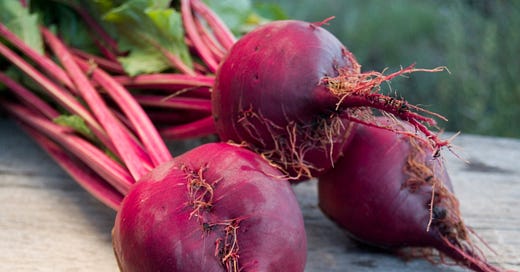







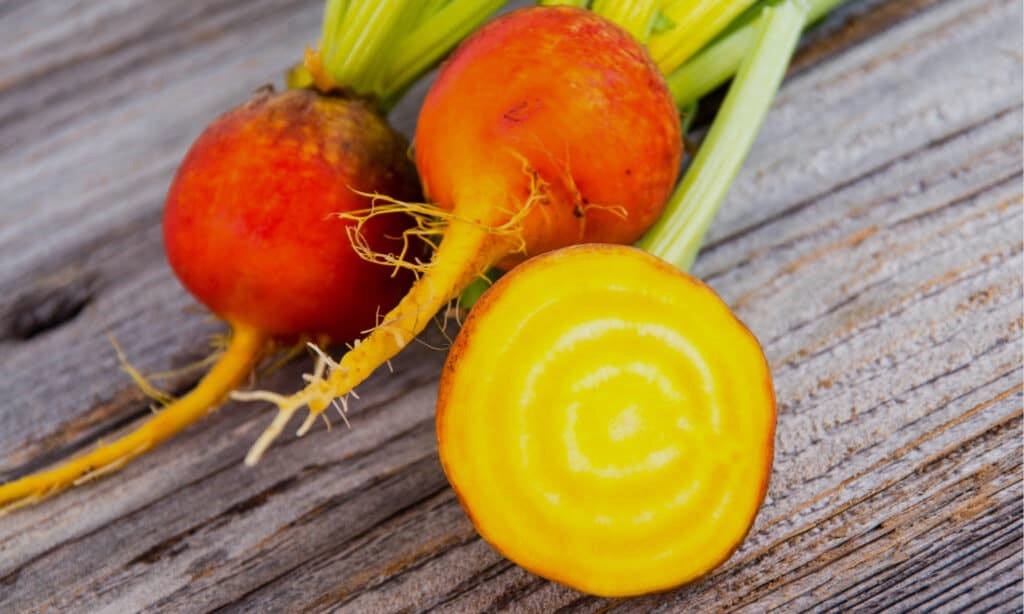
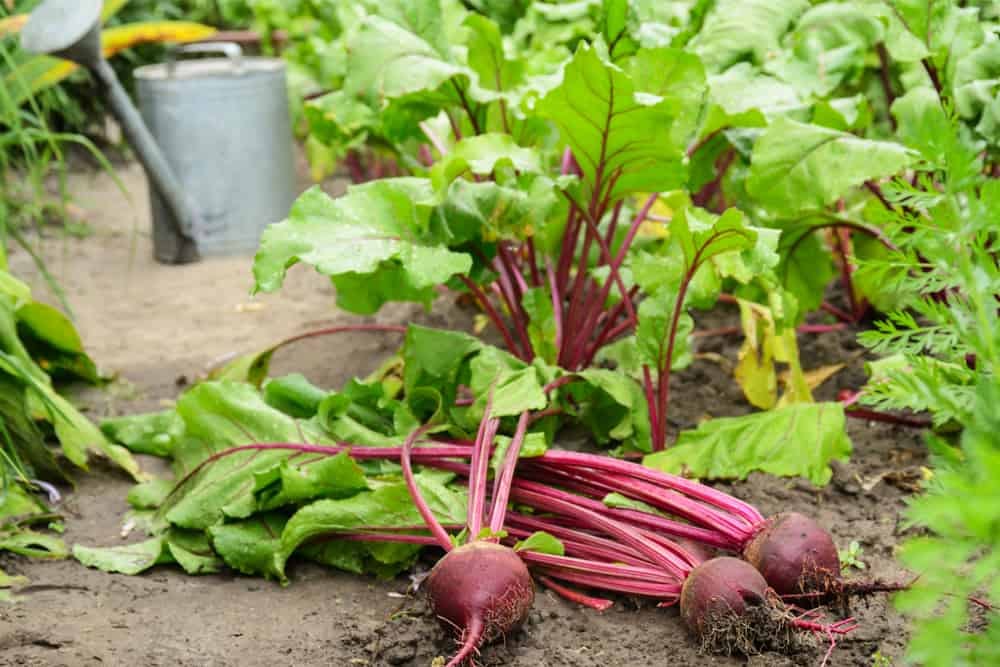
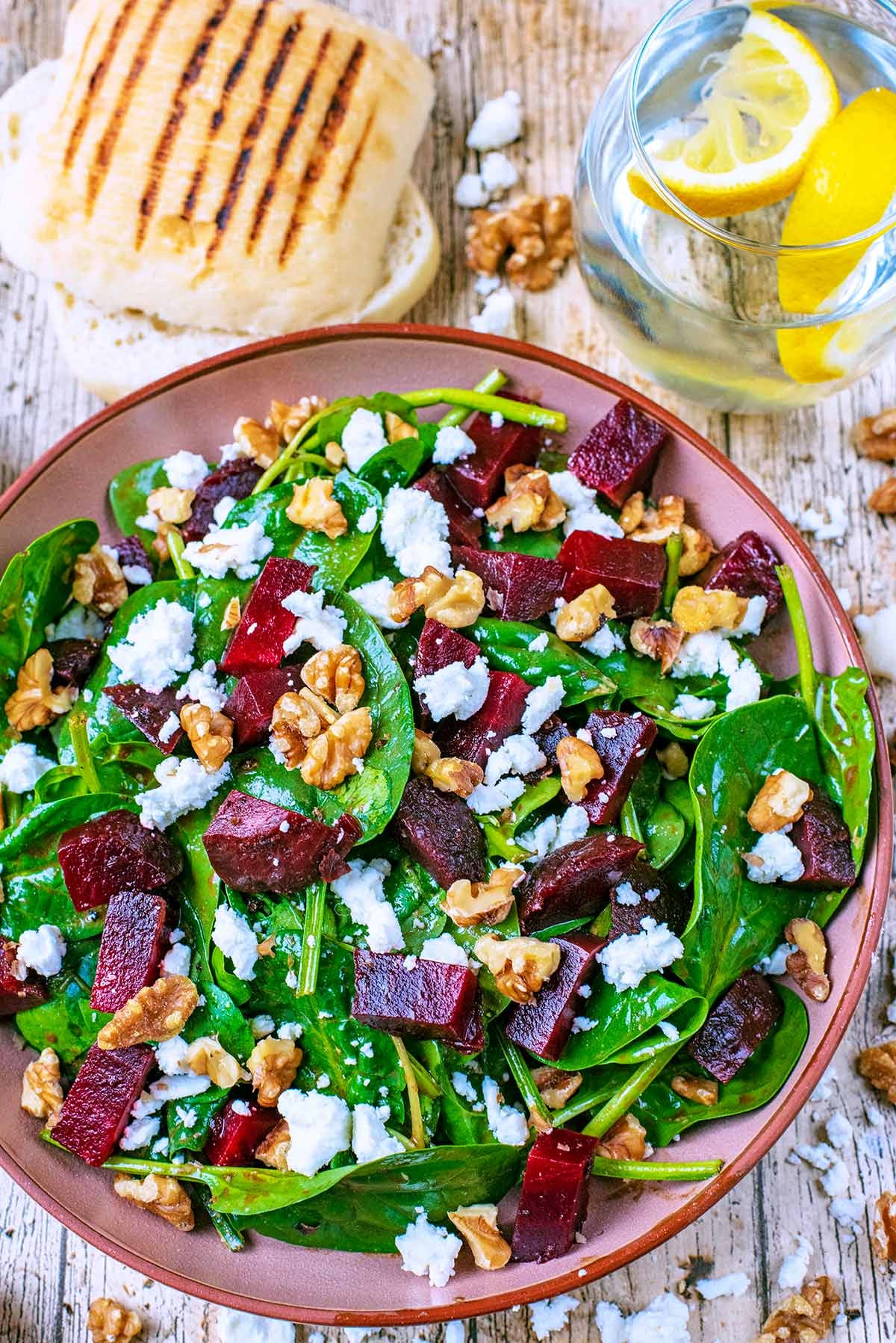

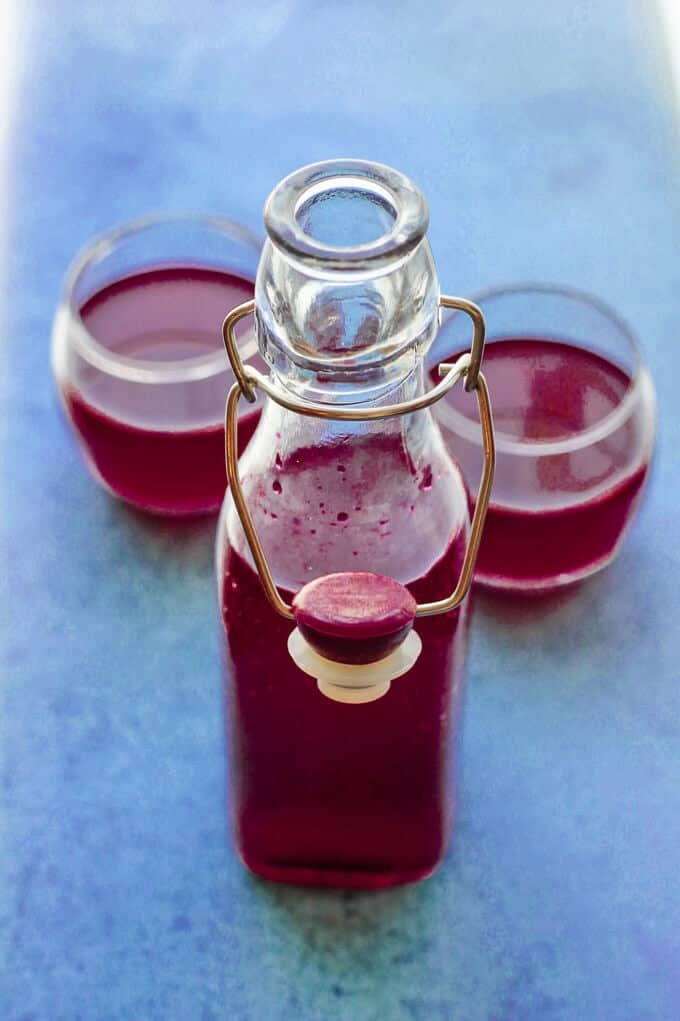


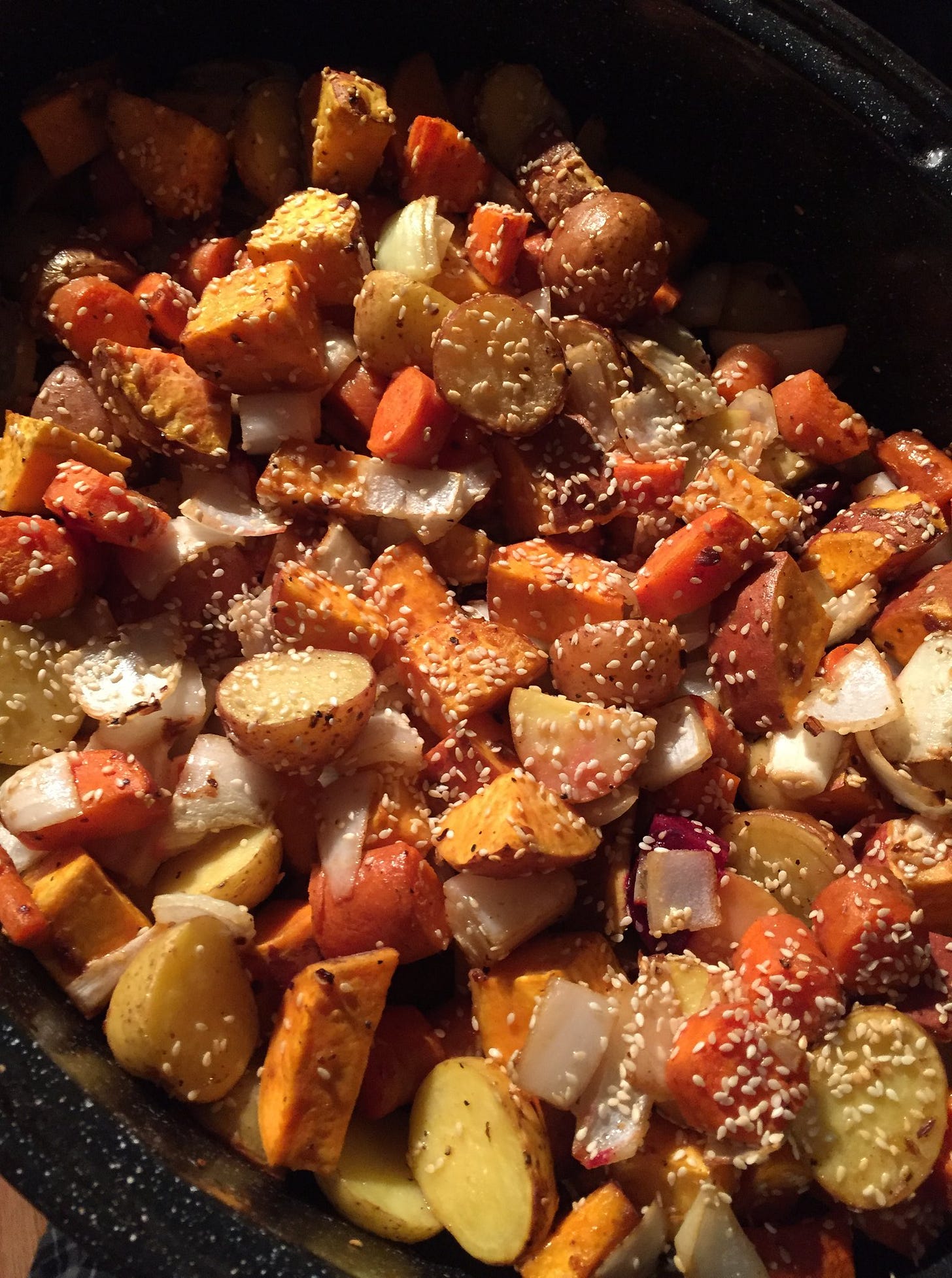
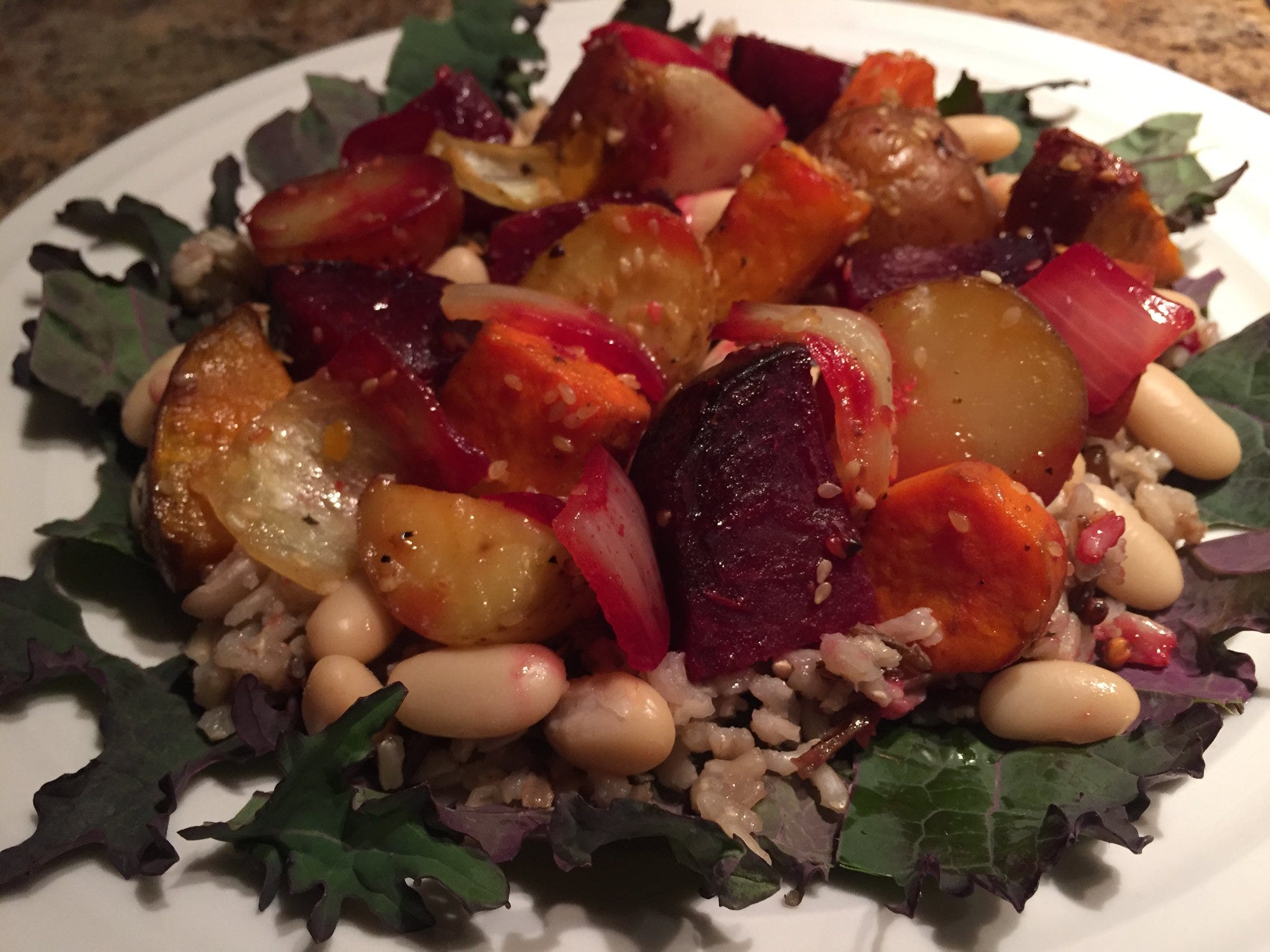


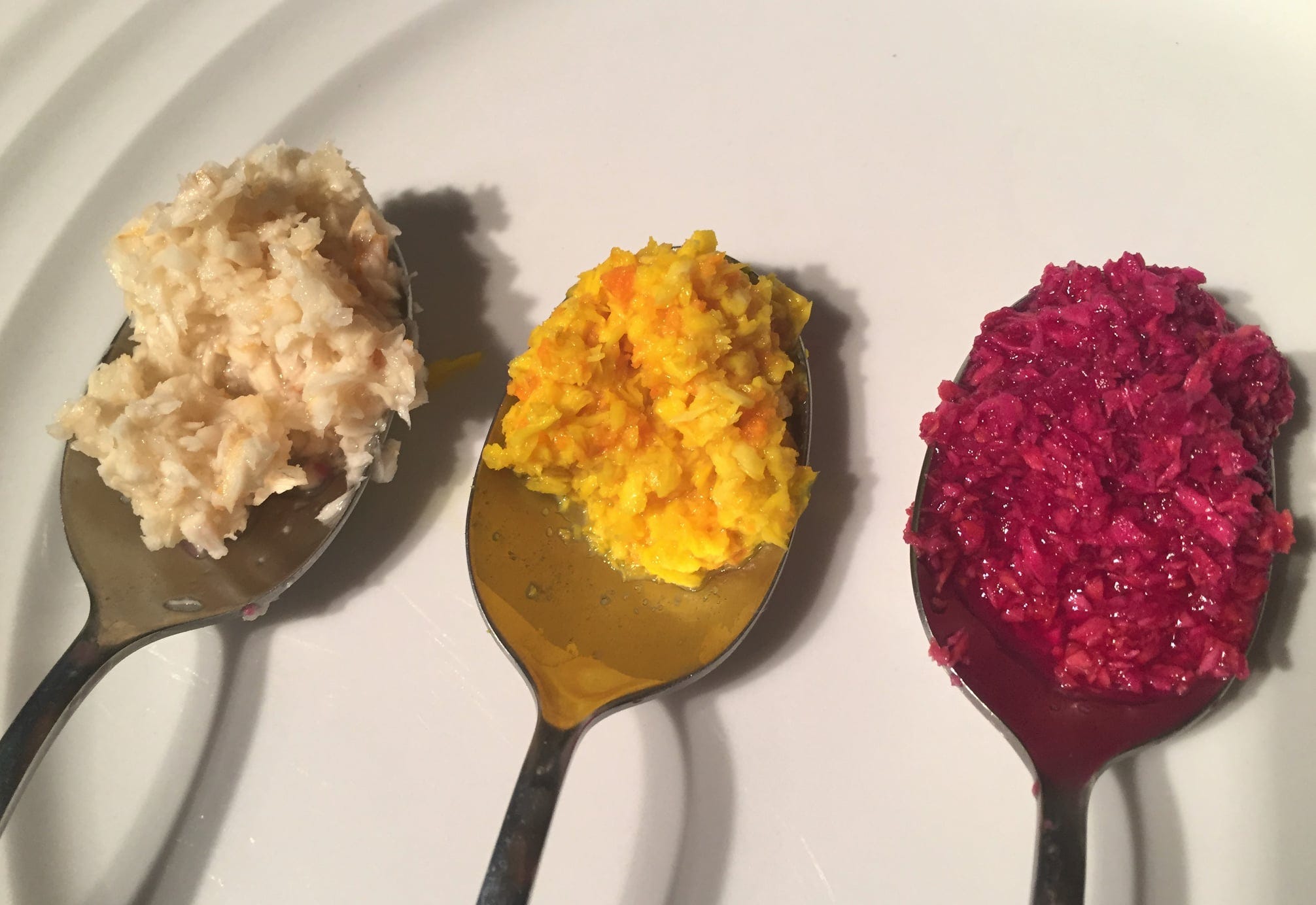
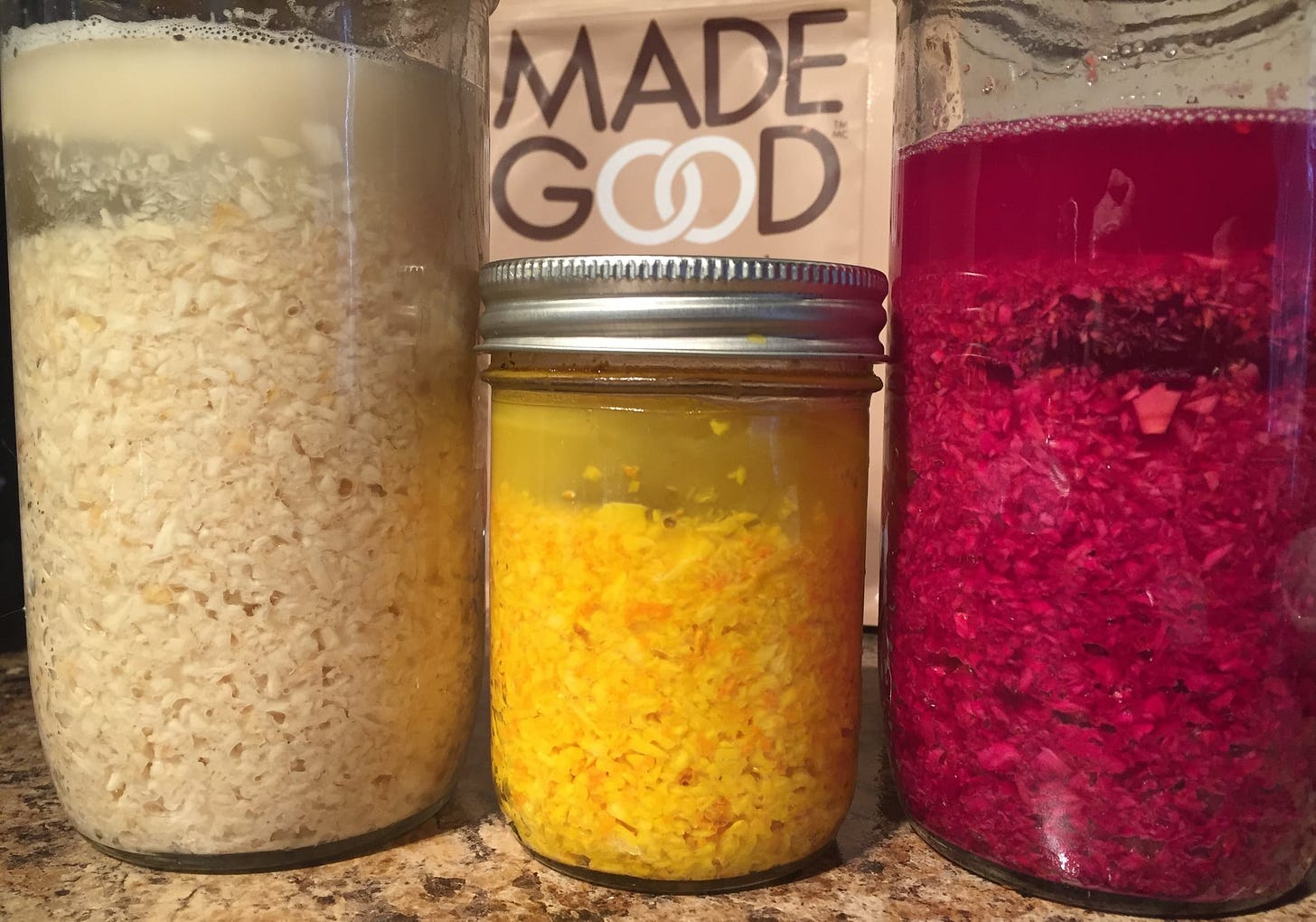
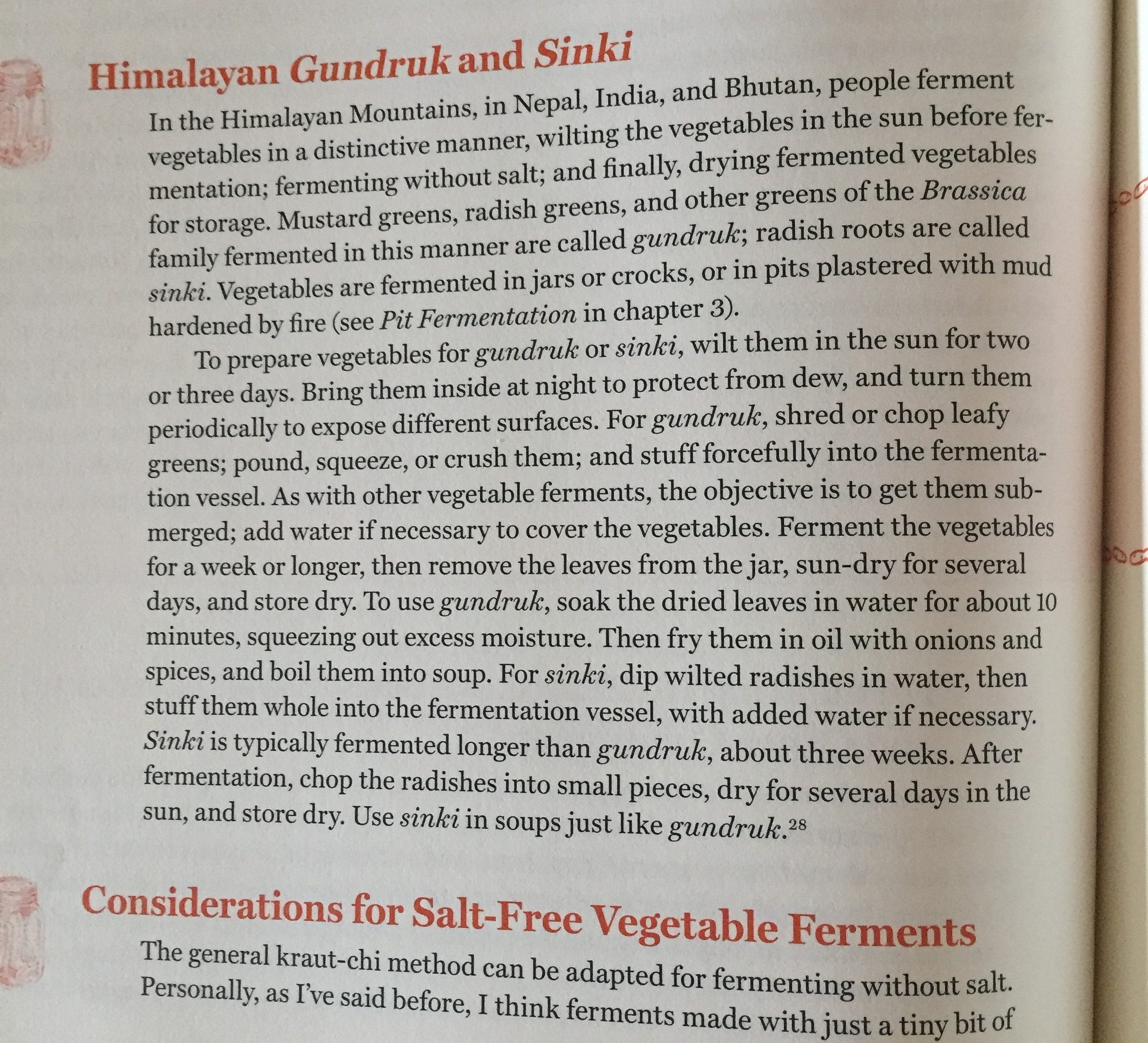
Beets, Radish, Turnips, all awesome vegetables, also survival foods as they grow in wide range of pH soils.
Thanks for reminding me how much I love beets!!! And thanks for the Beet music! 😁
Definitely going to plant some in our garden, both colors. Beets are beautiful!